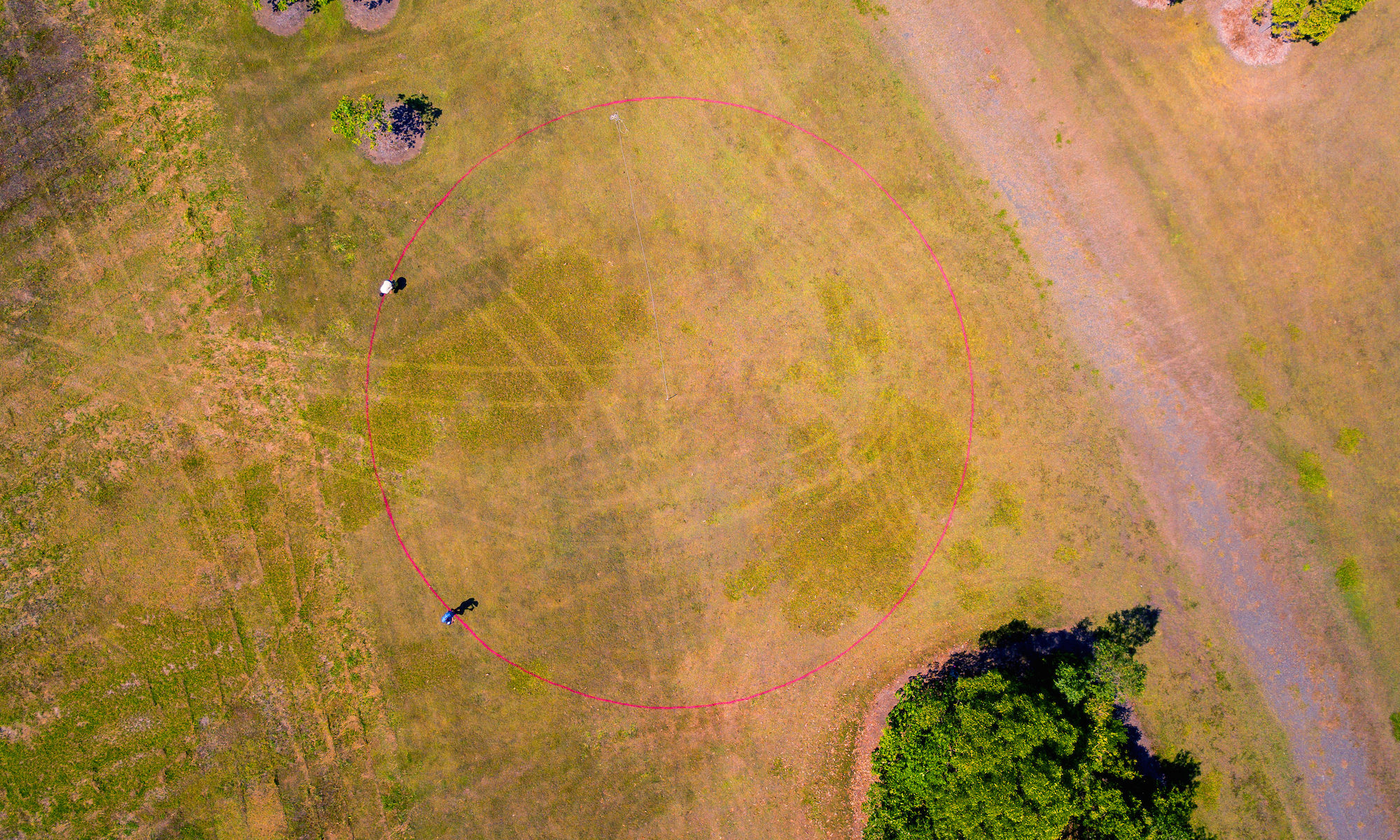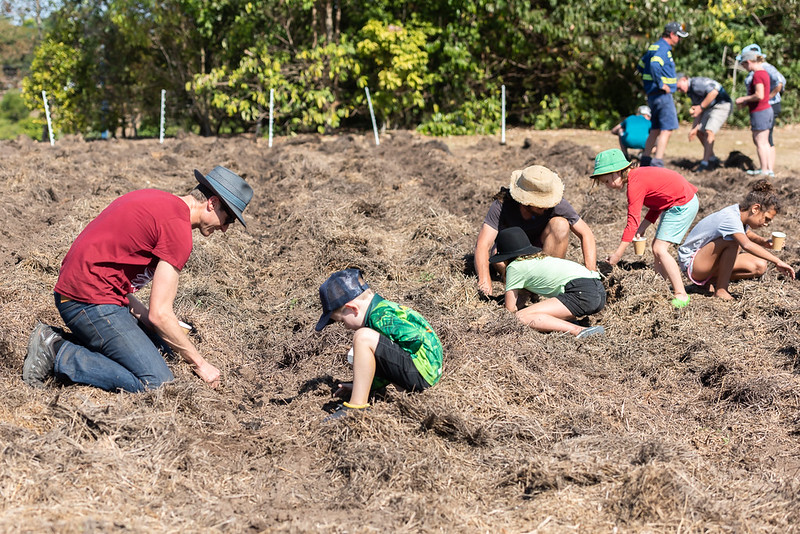
We always envisaged The Beacon as a way of bringing culture and agriculture together at the Mackay Regional Botanic Gardens.
At the most basic level, The Beacon is a 26 metre diameter demonstration farm, showing how you can have diverse plant species living alongside sugarcane. So, we needed to put some sticks of sugarcane into the ground, and we had to plant a bunch of sunflower seeds in straight rows – two purely practical tasks. But we wanted to make these tasks special, by creating some meaningful rituals around what might seem a relatively straightforward farming activity.
Our planting site is located on “public” land at the Botanic Gardens, which gives us the chance to bring a range of different people together, gathered around this circle of soil we’ve been tending with great care since February.
Traditional Owners
While working with the soil, we’ve also been cultivating friendships and working relationships with the Yuwibara people, the traditional custodians of the Mackay region. Even though the Botanic Gardens is on land owned by the Mackay Regional Council, who give us permission to plant and dig, at a deeper level it is the Yuwibara Aboriginal Corporation that we turn to, to ask for permission to work, to dwell, to plant.
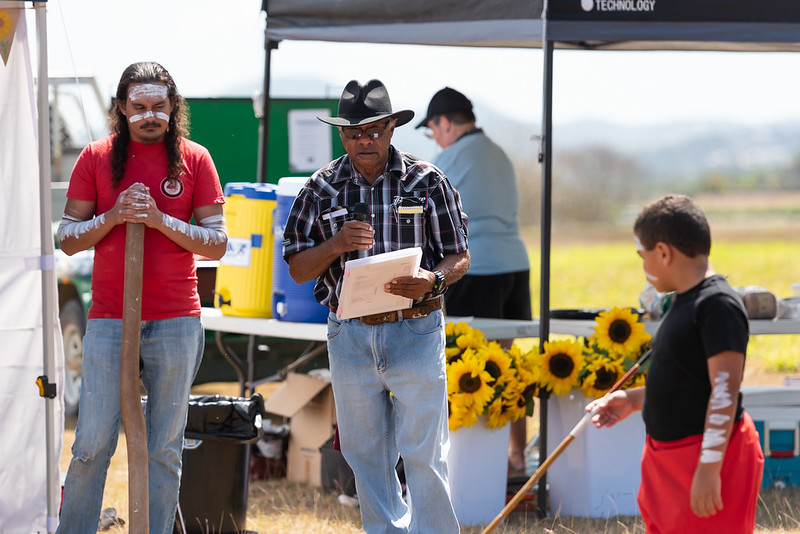
Uncle Phillip Kemp and Uncle George Tonga have been very supportive, and through them we’ve been beginning to learn about some of the histories and cultures of this place. This is especially important since Kim and I live in Wollongong, on Wodi-Wodi and Dharawal lands, hundreds of kilometres to the south.
We’ve also recently gotten to know Aunty Deb Netuschil, who choreographs the Diranga Gangali Aboriginal Dancers. At our recent SEED AND SONG event, these local kids “danced us into the day” with a set of fantastic moves accompanied by the talented Lyndon Francis on the didgeridoo.
In the lead up to SEED AND SONG, we spent a few hours with Deb at the Beacon. She told us about her many community projects, including working with people in jail, and conducting linguistic history research to piece back together the Yuwi language of the Mackay region. Here’s something we posted on Instagram about that:
https://www.instagram.com/p/BmxDwuQBSAh/?utm_source=ig_web_button_share_sheet&igshid=fk771p7chf0r
Australian South Sea Islander Connections
Crucial to our work at the Beacon is our relationship with MADASSIA, the Mackay and Districts Australian South Sea Islander Association. Without Starrett Vea Vea and Jemal Davis, and their team at the Community Hut located nearby, none of this tending would be possible. The fact that Jemal is on site every day with his work crew is the single most important thing helping the dual-crop grow and thrive.

As the chair of MADASSIA, Starrett jumped on board from the very beginning, recognising that a project about sugarcane has the potential to tap into the some important stuff for his community.
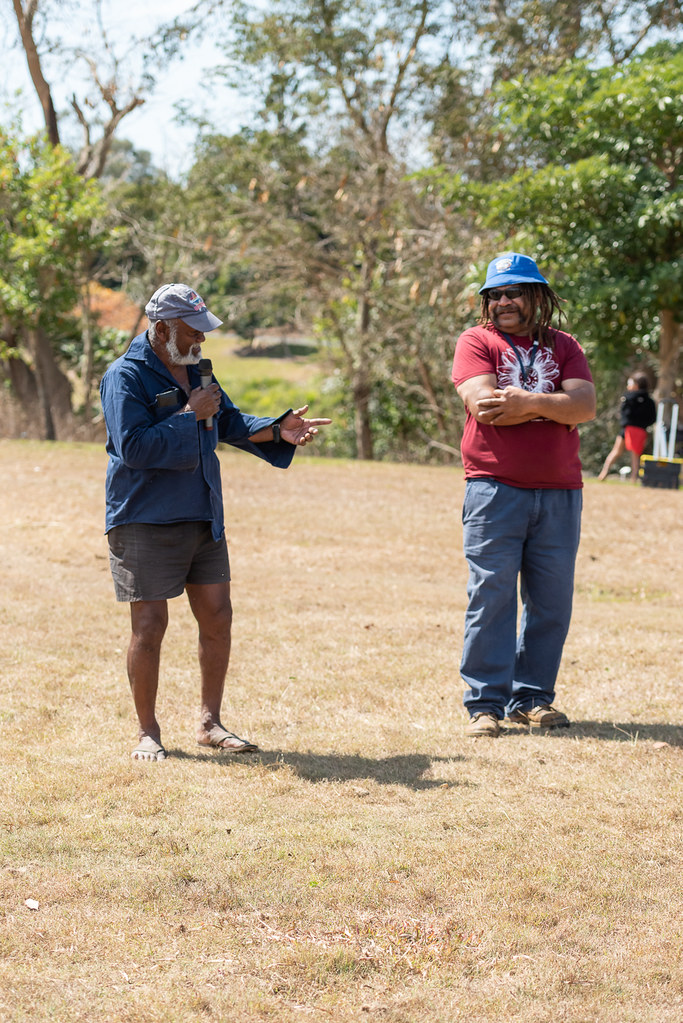
The South Sea Islander people have an indelible relationship with the establishment of the sugar industry in Australia. Without their yakka – which began as slavery, (and was sometimes called “indentured labor”), the economy of a huge area of Queensland today would not be so heavily based around sugarcane growing and processing.
At SEED AND SONG, Starrett invited Uncle Doug Mooney, an elder in the ASSI community, to come along and share some of his stories about working with sugarcane by hand in the old days.

When we organise an event like SEED AND SONG, we think about how to shape the experience of the participants on the day. We try to bring together a whole mix of elements – fun, food, learning, work and entertainment. We’ve loved working with the Sakwolo Islander Dancers – who perform in their gorgeous costumes designed and handcrafted by their choreographer and visionary leader David Tass. Their work connects the yakka of agriculture with the rituals of contemporary Australian South Sea Islander culture.
Arts and Environment Support
This year we received events funding from two sources: The Great Barrier Reef Marine Park Authority (GBRMPA), through their Reef Guardians program; and the Queensland Regional Arts Development Fund (RADF), through its “Green Arts” program. Both these programs encourage innovative cultural activities which have ecological benefit.
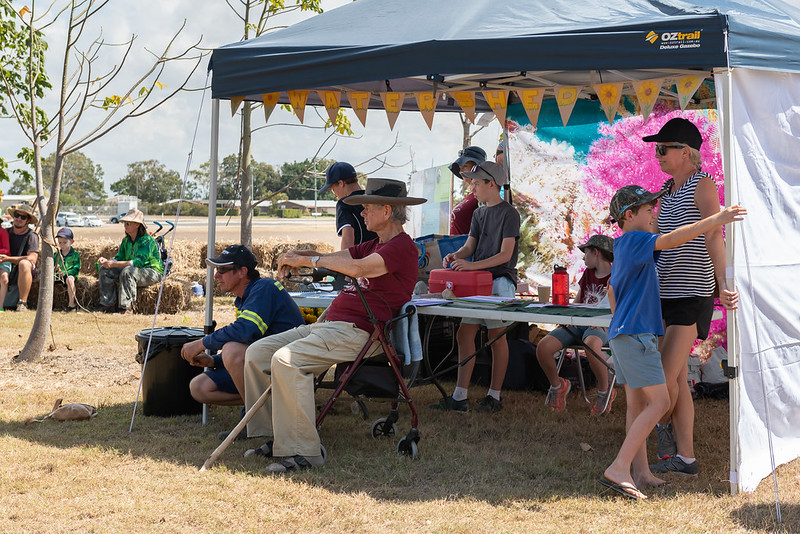
We’ve been collaborating with GBRMPA, and its Local Marine Advisory Committee (LMAC) for several years now as we develop our work in Mackay. Our approach has always been to celebrate the achievements of leading farmers in the sugarcane industry, and to create cultural events which help to share soil-focused farming ideas with the wider community.
Similarly, our RADF contacts, like Fiona Vuibeqa from the Mackay Council, have been very supportive of this unusual approach to using art to bring together diverse people, like farmers and the ASSI community.
The Beacon, in this sense, is a miniature “demonstration farm” – not only trialling and showcasing a range of methods which will help build soil, reduce chemical use, and cut down on the run-off which travels from the land out to the reef, but also testing out how land management can be done in a respectful, inclusive and cross-cultural way.
